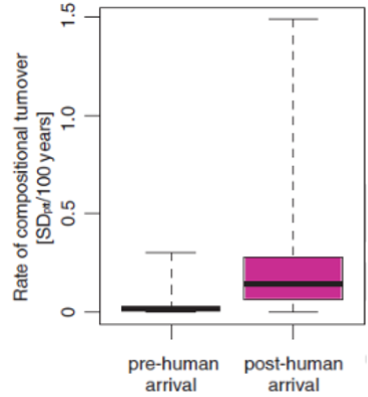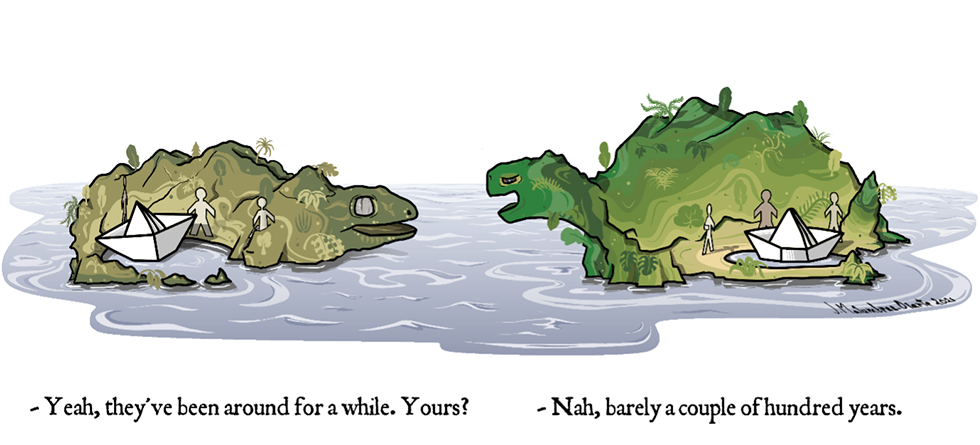Written by John Birks, professor emeritus at the Bjerknes Centre and the Department of Biological Sciences at the University of Bergen.
Bjerknes members have been co-authors of a paper published in Science looking at the impact of human arrival on island biodiversity.
In this study, led by Sandra Nogué from the University of Southampton, we used multivariate numerical analyses of dated pollen sequences from 27 islands around the world to quantify the rate of pollen compositional change – and hence vegetation change – before and after human arrival on the islands. The islands range from Iceland in the north to Tristan da Cunha and Nightingale Island in the south.
Islands and their biota have fascinated naturalists, ecologists, biogeographers, and evolutionary biologists since the times of Darwin, Hooker, Wallace, von Humboldt, and others. Islands are often thought of as "laboratories for the experimental study of evolution".
The American ecological polymath Ed Deevey wrote in 1969 that "the more one looks at this model [about island biota] ... the more one wishes for some fossil evidence. ... One wishes for some kind of genuinely historical data that might constrain the bold assumptions about time-rates."
Fifty years on, palaeoecologists have now studied peat and lake sediments from lakes or bogs on many islands. Nogué and her team of colleagues from eleven countries synthesised pollen-stratigraphical data and analysed these data quantitatively to show a consistent pattern of human arrival accelerating the rate of compositional turnover by, on average, a factor of eleven.
The most rapid changes occurred on islands that were settled more recently such as the Galápagos (first inhabited in the 16th century) and the Poor Knights archipelago in New Zealand (first populated in the 13th century). Islands where humans arrived more than 1500 years ago, such as Fiji and New Caledonia, saw a slower rate of change.
Similar trends are seen across a range of geographic locations and climates with, for example, Iceland producing similar results to Tenerife and tropical islands.
These changes occurred regardless of local ecological features of the islands such as area, glacial/interglacial areas, elevation, latitude, distance to mainland, volcanic activity, fire, climate change, earthquakes, extreme weather events (droughts, cyclones), and sea-level fluctuations.
This study shows how rapidly island ecosystems can change and how island ecosystems have been set on new ecological trajectories as a result of human settlement.
We conclude that conservation strategies for islands – many of which support endemic species – must account for the long-term impact of humans and the degree to which ecological changes today differ from pre-human times, despite islands being among the last regions on Earth to be settled and transformed by human activities. The human footprint is everywhere, even on remote islands.
Read more about my ERC project, Humans on Planet Earth, here.

Reference
Sandra Nogué, Ana M. C. Santos, H. John B. Birks, Svante Björck, Alvaro Castilla-Beltrán, Simon Connor, Erik J. De Boer, Lea De Nascimento, Vivian A. Felde, José María Fernández-Palacios, Cynthia A. Froyd, Simon G. Haberle, Henry Hooghiemstra, Karl Ljung, Sietze J. Norder, Josep Peñuelas, Matthew Prebble, Janelle Stevenson, Robert J. Whittaker, Kathy J. Willis, Janet M. Wilmshurst, Manuel J. Steinbauer (2021): The human dimension of biodiversity changes on islands. Science 372: 488-491. 10.1126/science.abd6706

